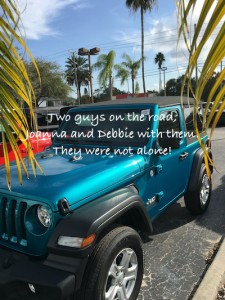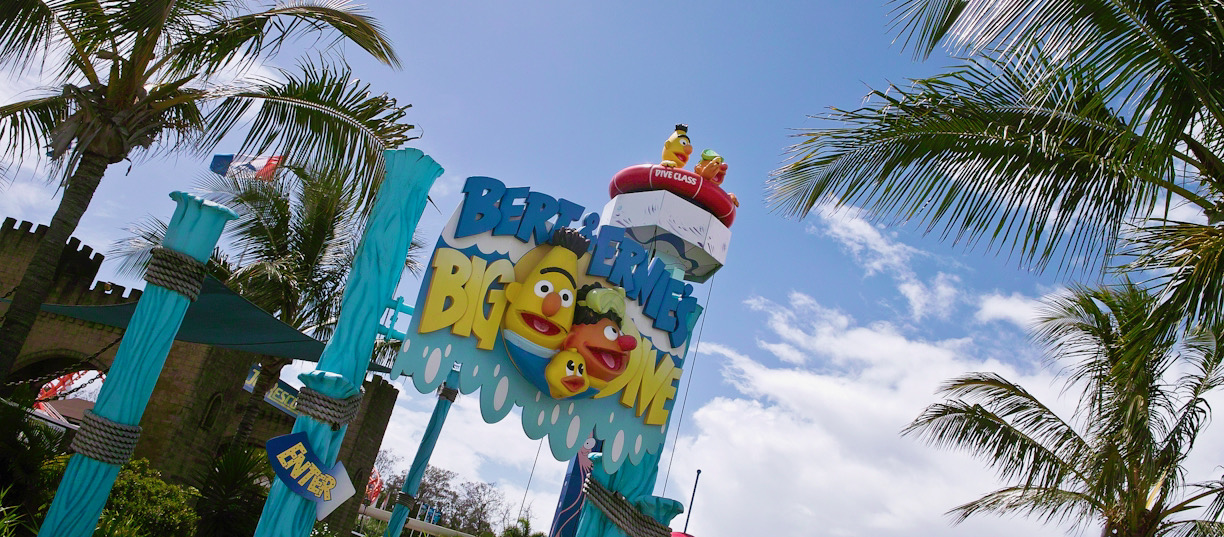As readers of this blog know, I’m on a quest to visit as many US National Parks as I can. Although this story is about the three NPs I recently visited, it’s much more than that. It’s about two guys who’ve lost their wives, but are committed to living to the fullest the years they have left. They know that’s what their spouses would want for them.
After retiring in 2015, Joanna’s cousin John and his wife Debbie started spending their winters in St. Petersburg. Since then, we would get together for lunch a couple times each year – alternating with them coming to Tampa and me meeting them in St. Pete. As usual, they arrived in January 2021. In early March, they called to tell me Debbie had been diagnosed with cancer and, instead of returning north, she decided to start treatment here in Florida. We had lunch in Tampa a short time later. Sadly, that was the last time I would see her as she passed away in May.
Shortly after Debbie’s death, I shared with John that I’d planned a solo road trip to visit the three National Parks in Florida but had found the trip was offered by Road Scholar (my favorite mode of group travel) and had signed up for it instead. He indicated a desire to see those places, as well. The next day I canceled my Road Scholar trip after John and I decided we should do our own version of it in my Jeep. Thus, was born Bert & Ernie’s Road Trip. We didn’t really name our road trip, but more than once we referred to ourselves as those Sesame Street characters. Plus, I needed a title for this post and thought that was fitting!
By the end of the summer and into the fall of 2021, we had sketched out what we wanted to accomplish – visit Florida’s only National Parks: Everglades, Biscayne and Dry Tortugas (and anything else that might interest us). To make the trip to the Dry Tortugas, which lies 70 miles off the coast of Key West, we had two options: a ferry or a seaplane. John was adamant about the seaplane option: it was more expensive, but also more adventurous! That was the only piece we had in place from the beginning. By September, we had nailed down a date and made our reservations for the seaplane adventure (Friday, January 28, 2022). We built a complete itinerary around that date, with enough slack to allow for serendipitous discoveries along the way. The only things we were sure about was where we’d sleep each night and the tours we had booked at each of the parks – the rest was wide open.
We met up in St. Petersburg on the morning of January 25 and hit the road!
E V E R G L A D E S N A T I O N A L PARK
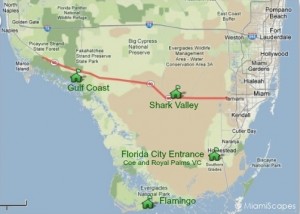
Everglades National Park (established as such in 1947) is the largest designated sub-tropical wilderness reserve on the North American continent and, as one our guides told us, is the only place in the world where alligators and crocodiles coexist in the wild. We didn’t see any crocs, but encountered many gators as well as other forms of wildlife. The park is enormous, encompassing some 1.4 million acres – making it the 3rd largest NP in the lower 48 states, placing it behind Death Valley and Yosemite. There are three entrances to the park, not connected, which are accessed through different areas of South Florida. We hit them all! Below are a few photos from our two-day exploration.
We first entered the park on the northwest side via the Gulf Coast Visitor Center. While we waited for our scheduled boat tour, we joined a walking talk by one of the rangers. She described the types of mangroves present in the Everglades and the importance of them. In addition to minimizing hurricane damage, mangroves provide all sorts of other benefits like preventing shoreline erosion, providing critical habitat for a variety of wildlife, and improving water quality.
On the boat we entered the area known as “Ten Thousand Islands”, containing seagrass beds that provide critical food and shelter for the marine life. White pelicans, that migrated to Florida for the winter from the mountains and plains of the US northwest, gathered on a sandbar. Having a wingspan of 9 feet makes them one of the largest birds in North America.
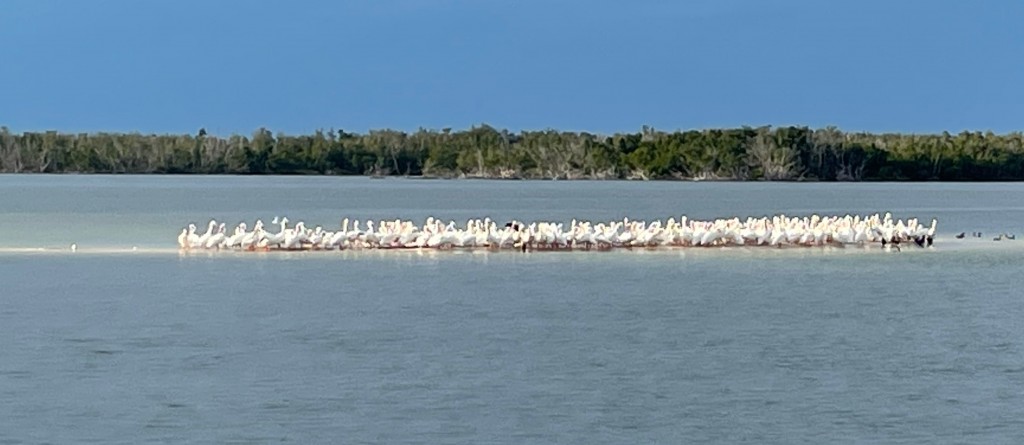
We learned from the ranger that mangroves provided protection to the land by diminishing the impact of hurricane Irma, a category 4 storm that struck the area in 2017. On the boat we saw stark evidence of that. On the western edge of several of the islands, we could see how the mangroves were damaged as they took the full brunt of the winds and storm surge. Nearby Everglade City certainly had major damage, however it could have been more disastrous if not for the mangroves .
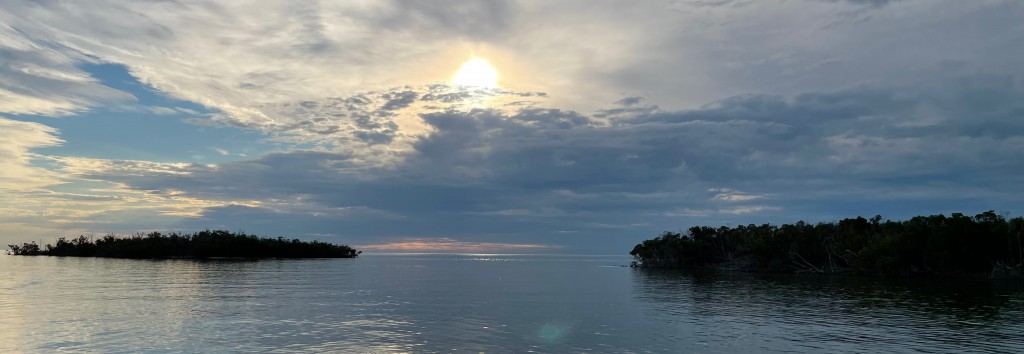
Our next stop along the Tamiami Trail was the Shark Valley Visitor Center. We opted for the short (0.2 mile) walk along the Bobcat Boardwalk – so-named for the bobcats known to prowl the boardwalk at night. No bobcats sighted, however we did encounter this fella basking in the sun!
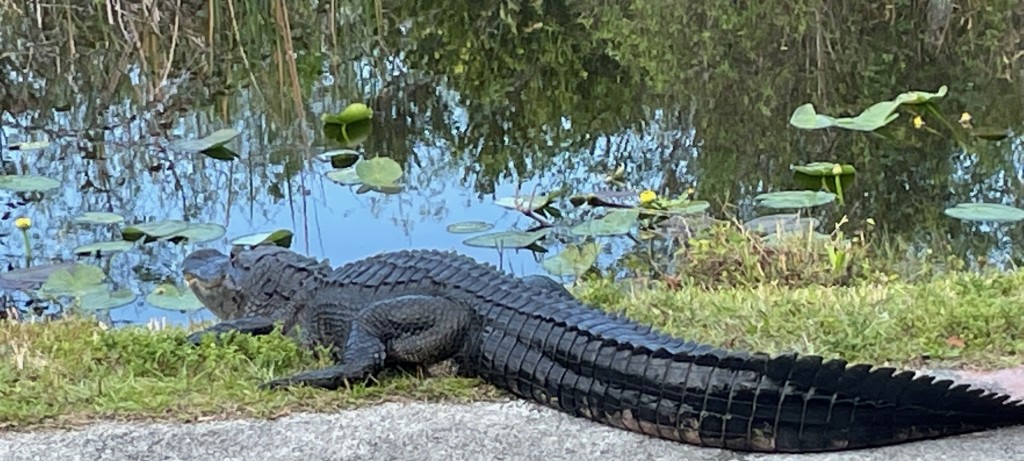
On our second day, we entered the park via the Ernest F. Coe Visitor Center at the southeast corner. We had arranged for a four-hour auto tour with the Everglades NP Institute. Normally this program is offered as a van ride with a guide to the various venues, but Covid necessitated a change. We followed the van in our car, equipped with a walkie-talkie so we could hear the guide’s narration. It worked out very well and even better because there was only two other folks taking the tour – a husband and wife. Richard, our guide, was super-interesting and knowledgable. He was so engaging that he lost track of time and our four-hour outing stretched to five!

The sign read: “WARNING Vultures May Damage Vehicles. Vultures in this area are attracted to the rubber around windshields, sunroofs and windshield wipers. Use provided tarps to cover vehicles.” And cover we did!
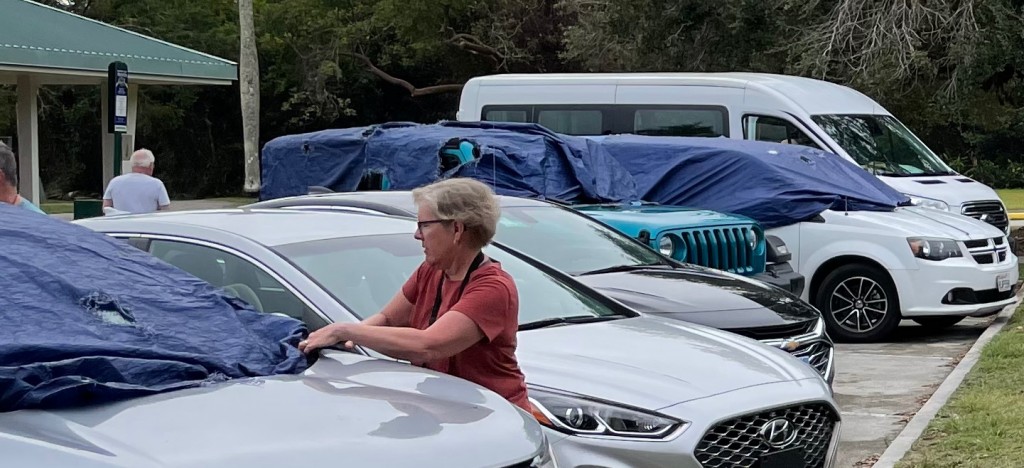
At the Royal Palm visitors center we strolled the Anhinga Trail, an easy paved walkway/boardwalk that runs over a freshwater sawgrass marsh. Richard entertained us with his commentary along the way. Spatterdock plants, a member of the lily family, filled the marsh along the trail. We could hear and barely see the waterfowl on the distant shoreline. John struck up a conversation with a fellow carrying a long-lensed camera who shared a close-up photo of a Purple Gallinule he had seen frolicking on the leafy pads (see inset on photo).
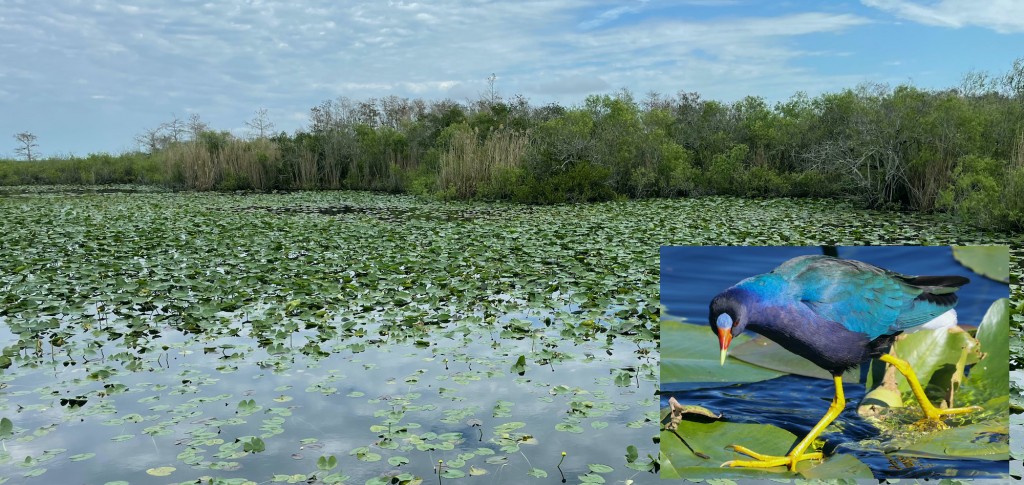
Nike Missile sites operated in the US between the 1950’s and the 1970’s to defend coastal urban areas against aerial attack. As a youth, my friends and I would bike to see (what I now know was) the Integrated Fire Control (IFC) base that controlled missiles staged on an island in Boston Harbor. [Isn’t Google wonderful!] We’d peer through the fence and wonder what was happening behind those walls. It’s really strange to know that, among all the beauties of nature, Everglades NP houses one of the best preserved relics of the cold war – an historic Nike Hercules Missile Base, HM-69.
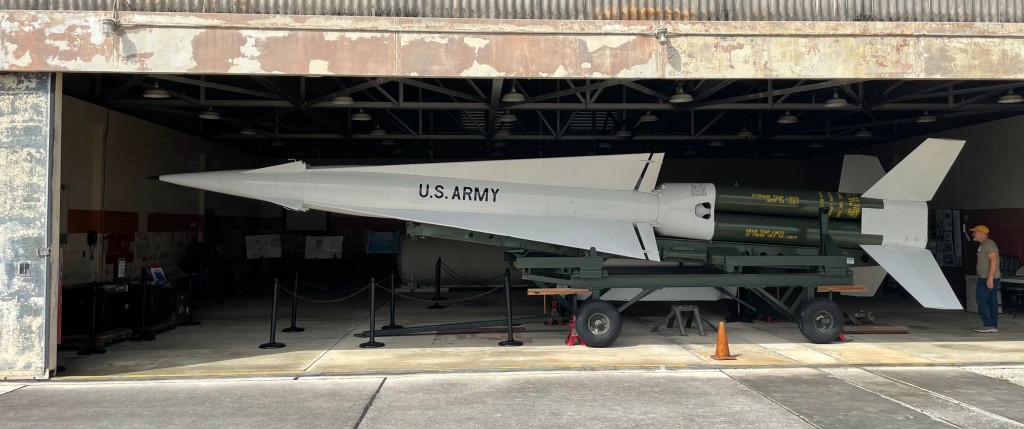
B I S C A Y N E N A T I O N A L P A R K

As you can see from the map, almost all of Biscayne NP is covered by water. It’s not like the typical park where you can drive in, find a hiking trail and set off exploring. Access to anything beyond the small mainland portion requires a boat. Most exploring is done on or underwater. Given the time of year of this visit, we opted to be on the water for a tour aboard the Biscayne NP Institute‘s Sawfish.

During our ride out to Boca Chita Key, our guide told stories about the early settlers among these small islands. None was more poignant than the story of Lancelot Jones. Here’s a link to a Ken Burns clip: Lancelot Jones: A Hero of Biscayne Bay.
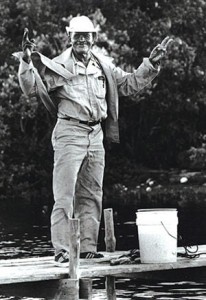
We docked at Boca Chita Key and were able to get out, stretch our legs and explore. Mark Honeywell, an electronics industrialist, owned the island in the early 1900s. He had an estate in Miami, but used the island as a get-away. Among the structures, is this 65ft lighthouse he built in the 1930s. Shortly after construction, the Coast Guard deemed it a navigation hazard as it was not charted. On maps it’s designated an “ornamental lighthouse”. Today the lighthouse is Biscayne NPs de facto symbol.
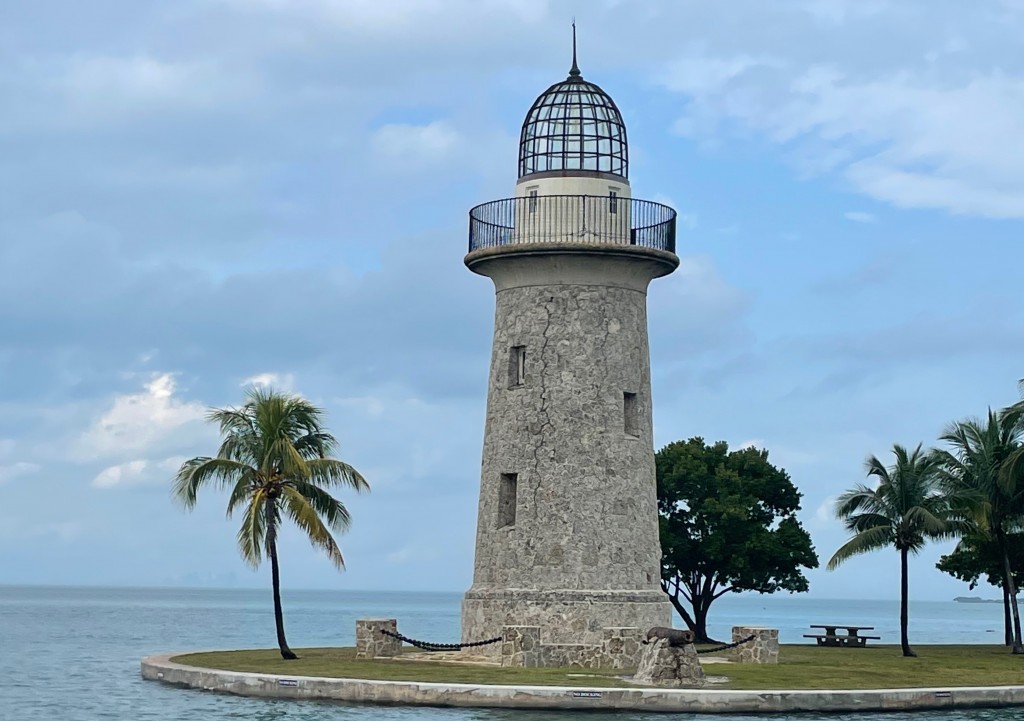
John chose this day to sport his “road trip” socks!
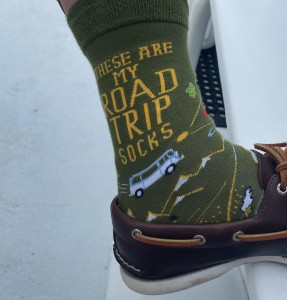
D R Y T O R T U G A S N A T I O N A L P A R K
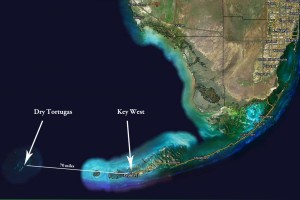
As described in VisitFlorida: “Ponce de Leon was the first European to describe these islands. The Spaniard who had named the North American continent ‘La Florida’ in 1513 also named the islands. The conquistadors had stopped to gather birds, eggs and turtles for food. ‘La Isla de Tortugas,’ Ponce called the island of turtles. Later, mariners added one more word to the charts: ‘Dry.’ The only drinking water obtainable came from rain puddles.” It was designated a National Park in 1992.
According to a CBS news article, Dry Tortugas NP was ranked 54 out of 62 national parks in the number of visitors for 2020. The other lower-48-state NPs with fewer were Isle Royale in Michigan and North Cascades in Washington state. The remoteness of these three certainly contributes to those rankings, none more-so than Dry Tortugas.
A view of the park from our seaplane. There are basically two things to do at the park: tour the fort or snorkel in the shallow waters. We opted to spend our time exploring the fort which takes up most of the western end of the island. There were two planes in use that day and you can see our sister plane, in the left side of the photo, taking off. The ferry can be seen docked in front of the fort.
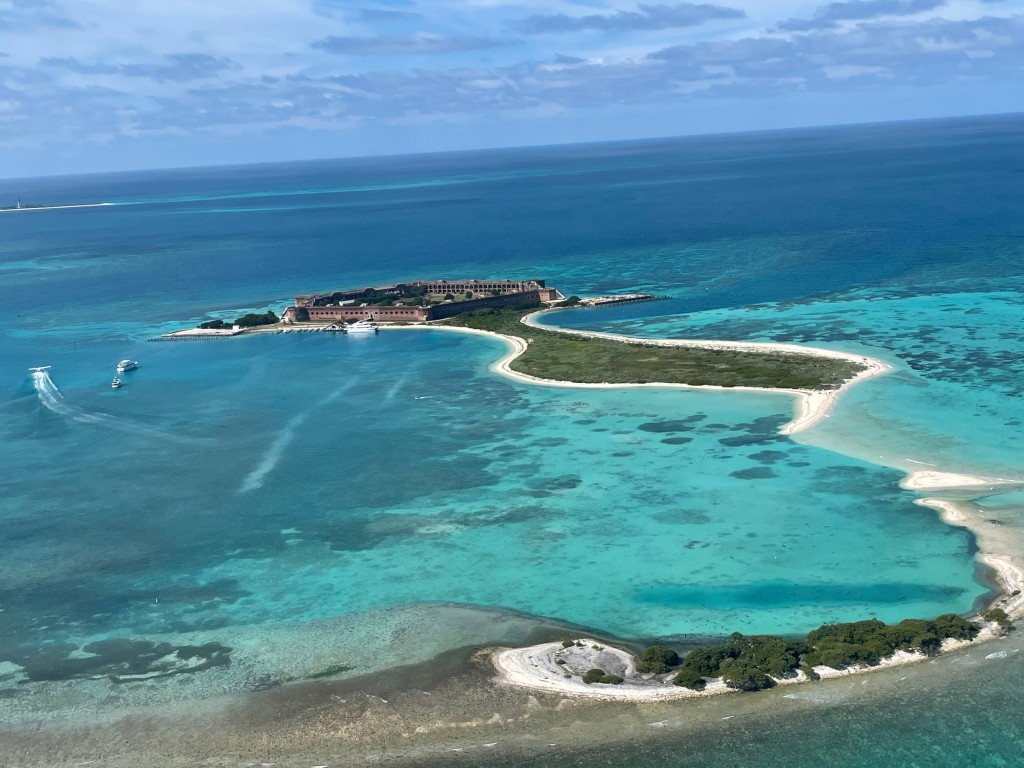
I’m happy John won over on the seaplane vs. ferry option. So much more to see from the air – one of treasure-hunter Mel Fishers’ tugs that sank in 1975; numerous sea life and islands. Just the adventure of landing on and taking off from a water runway. All this, while the pilot was barefoot!

Conor Knighton describes Fort Jefferson this way in his book, “Leave Only Footprints“…”Sixteen million bricks, to be precise, all of them imported. Fort Jefferson, originally intended to protect US shipping lanes, is the largest brick masonry structure in the Americas. It was never finished. Still under construction when the Civil War broke out, it became a Union stronghold under Lincoln, who repurposed its forty-five-foot-high walls to contain traitors and deserters. After his death, those walls would imprison four of the men who were convicted of plotting to kill him.“
Dr. Samuel Mudd, who treated John Wilkes Booth’s fractured leg after Lincoln’s assassination, was one of those conspirators imprisoned here. His prison cell: unremarkable.
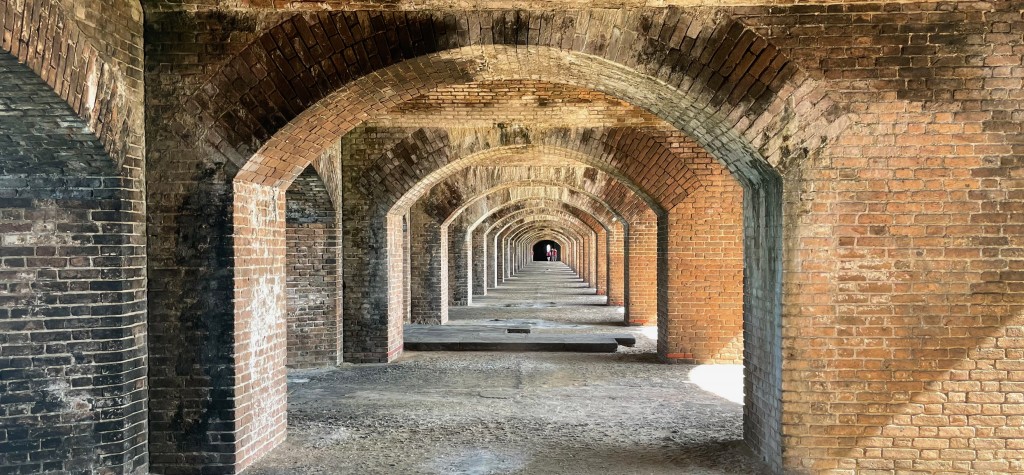
T H E END OF THE ROAD
Upon our return to the mainland, we decided to venture into downtown Key West for a final snapshot at the disputed “Southernmost Point in the Continental USA“. We had both visited the area years before and had no desire to spend a lot of time in the town teeming with tourists. We got a quick snapshot and then headed to an ice cream shop in a relatively quiet area where we enjoyed our treat before heading about 50 miles up the road to our hotel. The next morning we took the last leg of this journey back to Tampa/St Pete.

I N S U M M A R Y
A few years ago I introduced John to the National Park Passport, a compact booklet that lists all of the National Parks and many of the other national treasures such as monuments, recreation areas, historical sites, etc. Generally, each NP has a free cancelation stamp pad for you to record in the passport the date you visited. Also, most Visitor Centers sell a pictured stamp that you can paste into the passport. I use my book to record visits to any of the 63 National Parks, and don’t record every gate that I enter for the same park; John on, the other-hand, uses his to capture every type of national treasure he visits and every gate he enters – and he’s on a mad-man mission to visit as many of the thousands of them that he can. I call myself a purest, because I just record National Park visits; he calls himself a purest because he doesn’t clutter his book with the pictured stamp. He semi-converted me just for this trip – I got every free date stamp he did and even got two for the Big Cypress National Preserve – but still got my pictured stamps!
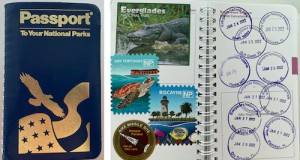
This was really a wonderful way to spend five days together. Last year was a rough one for most, but more so for John after losing Debbie in just the span of a few months. With this adventure we wanted to give ourselves something to look forward to. Even though I lost Joanna 11+ years ago, I’d hoped I could empathize and show him one can come through this. All evidence shows that he is and in a bit more time, he will!
I’ve messed around with haikus in the past. Britannica describes them as “as unrhymed poetic form consisting of 17 syllables arranged in three lines of 5, 7, and 5 syllables respectively.”
I think these 17 syllables pretty much sum up Bert & Ernie’s 1,000 mile road trip…
